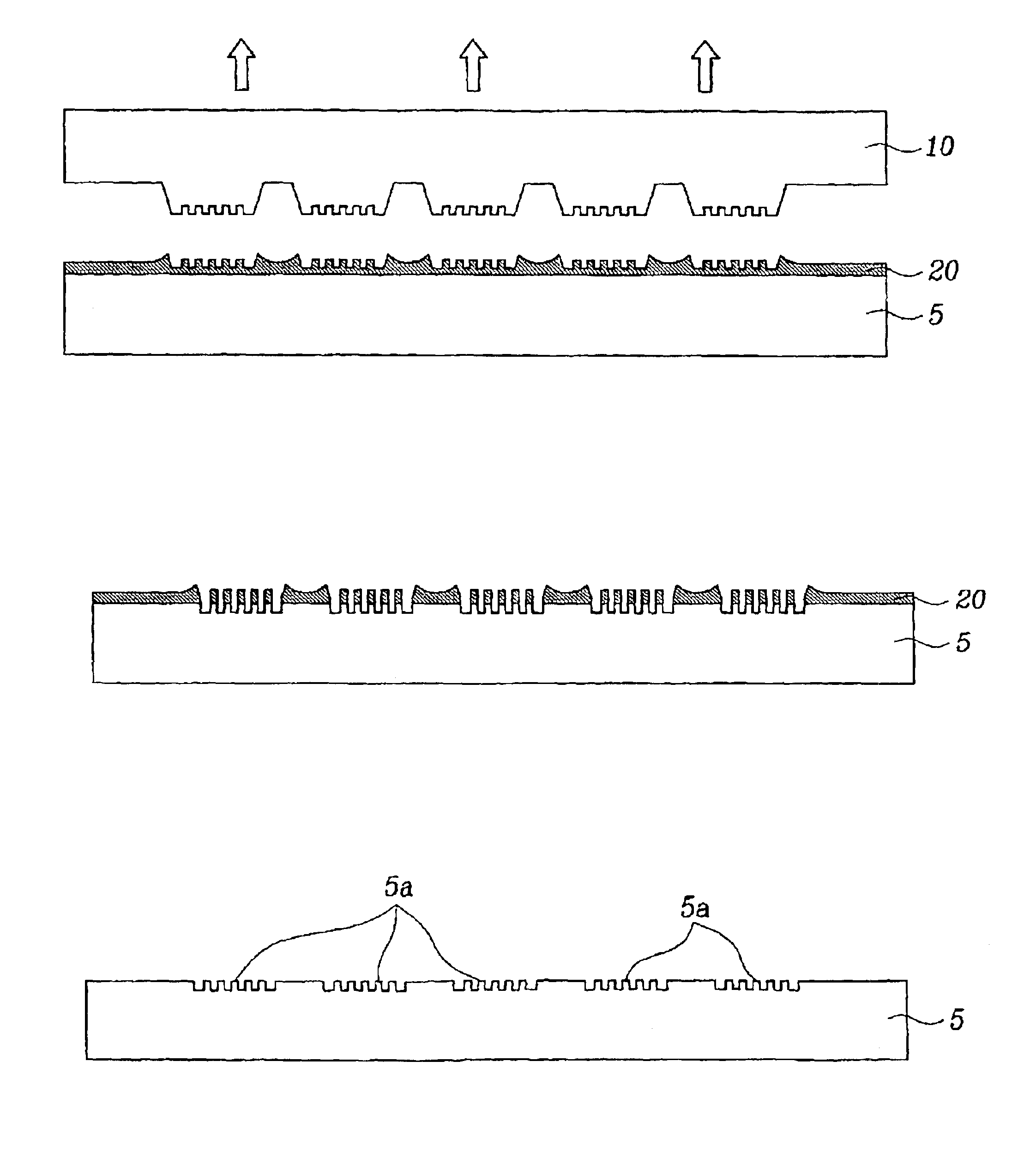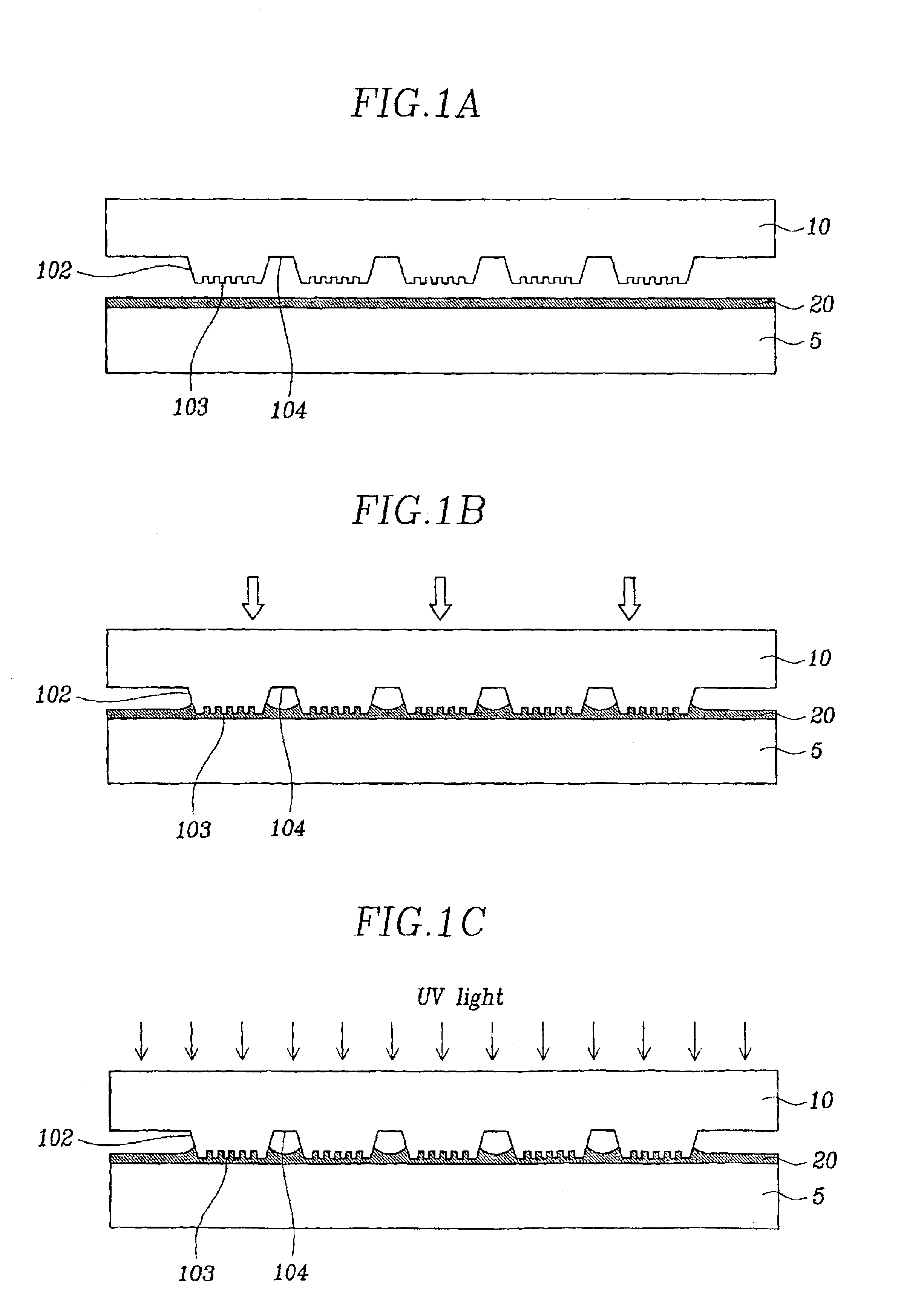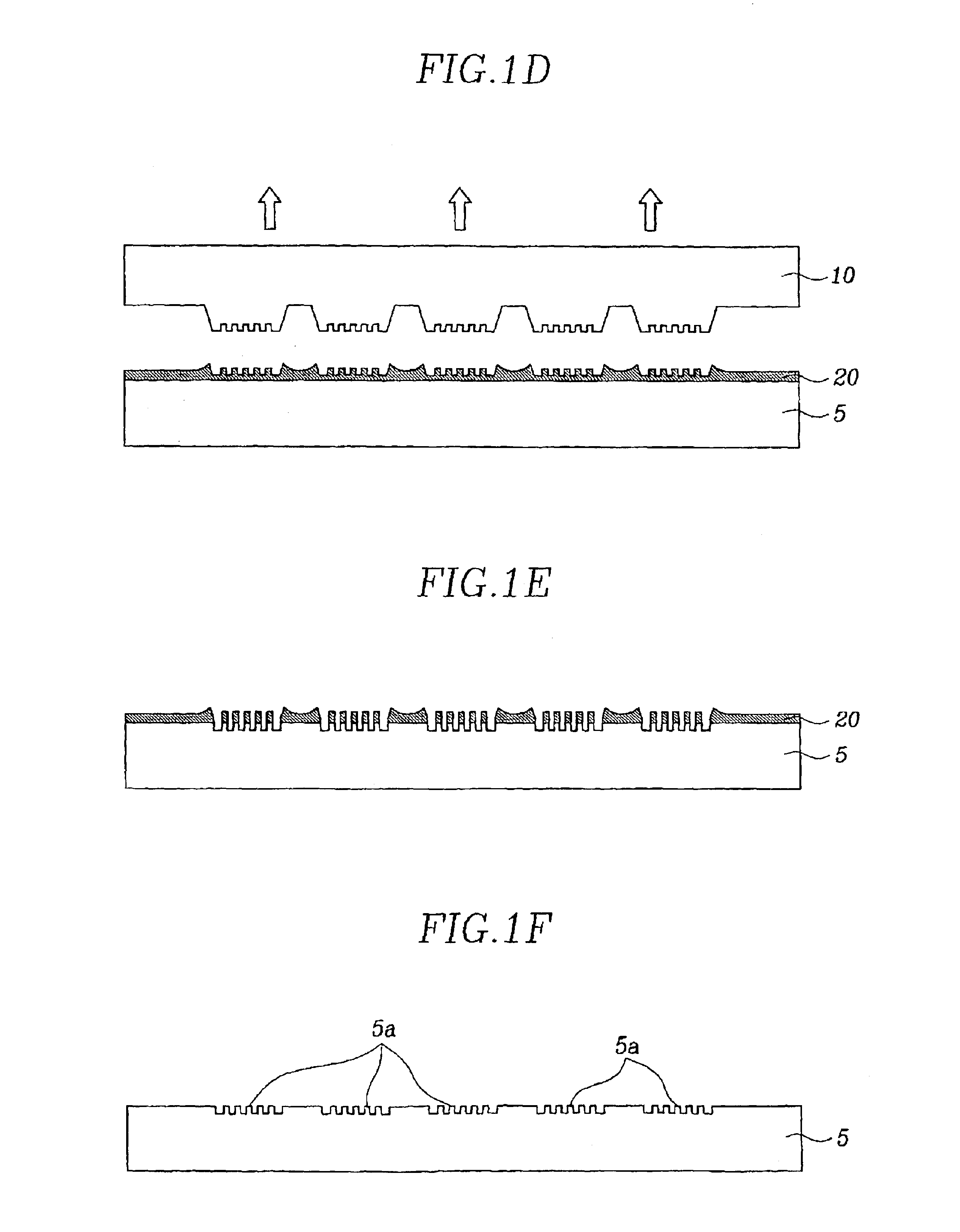UV nanoimprint lithography process using elementwise embossed stamp and selectively additive pressurization
a technology of nanoimprinting and lithography, applied in photomechanical treatment, instruments, electrical equipment, etc., can solve the problems of difficult multi-layer alignment, liable to damage to previously produced nanostructures, and difficult multi-layer alignment, so as to achieve fast form high-precision and high-quality nanostructures, and high-quality nanostructures
- Summary
- Abstract
- Description
- Claims
- Application Information
AI Technical Summary
Benefits of technology
Problems solved by technology
Method used
Image
Examples
first embodiment
[0065]FIG. 2 is a top view of the elementwise embossed stamp 10 according to the present invention, and FIG. 3 is a sectional view taken along line A—A of FIG. 2.
[0066]As shown in FIGS. 2 and 3, the element stamps 102 arranged on the stamp 10 are embossed thereon, and the grooves 104 are formed between adjacent element stamps 102. Further, the nanostructures 103 are formed on each element stamp 102. The nanostructures 103 are formed using a microfabrication process; such as electron-beam lithography.
[0067]It is preferable that a depth hG of the grooves 104 is 2 to 1000 times a depth hS of the nanostructures 103. If the depth hG of the grooves 104 is less than 2 times the depth hS of the nanostructures 103, the minimal difference with the depth hS of the nanostructures 103 is such that the resist flowing into the grooves 104 reaches bottom surfaces thereof such that the function of the grooves 104 (i.e., receiving all residual resist) is unable to be realized. On the other hand, if t...
second embodiment
[0074]FIGS. 5A to 5D are sectional views used to describe processes for embossing element stamps by etching an elementwise embossed stamp according to the present invention.
[0075]To manufacture an elementwise embossed stamp 30 of the second embodiment of the present invention, a UV-transparent material such as quartz, glass, sapphire, or diamond is formed into a plate 6. Using the microfabrication process such the electron beam lithography on one side of the plate 6, nanostructures 303 are carved into the plate 6 at predetermined intervals, that is, at areas corresponding to where element stamps 302 are to be formed.
[0076]Next, a UV-curable resin layer 34 is deposited on the stamp 6 covering the nanostructures 303. A mask 36 having a pattern that blocks areas where the element stamps 302 are to be formed and exposes all other areas is placed at a predetermined distance from the surface of the plate 6 on which the nanostructures 303 are formed. UV rays are then irradiated onto the pl...
sixth embodiment
[0096]FIG. 20 is a top view used to show incompletely compressed resist areas when resist droplets are dispensed on a substrate using a multi-dispensing method, and an elementwise embossed stamp is used to apply a first pressure in a UV nanoimprint lithography process according to an embodiment of the present invention. FIGS. 21A and 21B are sectional views used to describe the sequential application of a first pressure to resist droplets using an elementwise embossed stamp, and the application of a second pressure to the backside of a substrate using a pressure element device in a UV nanoimprint lithography process according to the present invention. FIGS. 21A and 21B are sectional views taken along line C—C of FIG. 20.
[0097]In order to form nanostructures on a substrate 80, a resist 78 is first deposited on the substrate 80. The resist 78 may be deposited on the substrate 80 using a spin coating method that evenly coats the resist 78 over an entire surface of the substrate 80, a d...
PUM
 Login to View More
Login to View More Abstract
Description
Claims
Application Information
 Login to View More
Login to View More - R&D
- Intellectual Property
- Life Sciences
- Materials
- Tech Scout
- Unparalleled Data Quality
- Higher Quality Content
- 60% Fewer Hallucinations
Browse by: Latest US Patents, China's latest patents, Technical Efficacy Thesaurus, Application Domain, Technology Topic, Popular Technical Reports.
© 2025 PatSnap. All rights reserved.Legal|Privacy policy|Modern Slavery Act Transparency Statement|Sitemap|About US| Contact US: help@patsnap.com



